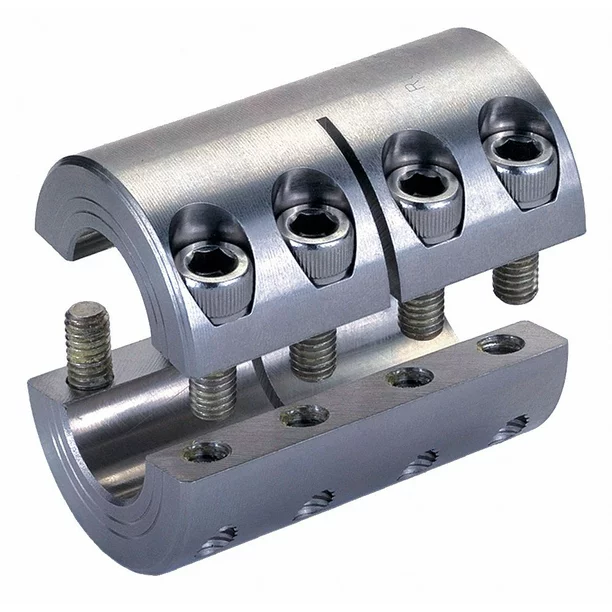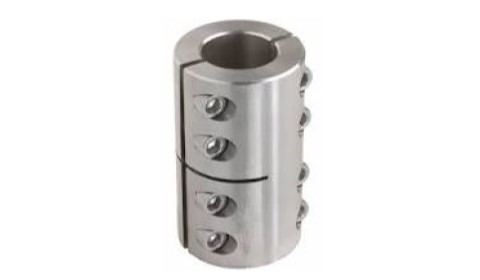Product Description
Product Description
ZYfire Hose Corporation, founded in 2000, we research and produce Lay flat frac hose, fire hose, rack hose, industrial hose, forestry hose, snow-making hose, irrigation hose, drag hose, potable water hose, No-dig pipe rehabilitation liner, TPR layflat hose, hose couplings, landing valves and other fire fighting equipments.
Material: Light alloy
Also available in anodized or hard coated edition and with additional locking device
These hose couplings are suitable for hoses with wall thickness of 2, 8 – 3, 2 mm. The binding consists of 3 segments with screws and nuts.
Advantages:
1. Assembly with simple tools (hexagon key)
2. Coupling and binding re-usable
3. Binding protects the endangered range between tail end and hose
4. Short length supports problem-free rolling up
5. High pressures are possible because of enormous firmness of the binding
6. No fixed hook when pulling the hose because of the bevel at the binding
Main Products
Company Profile
FAQ

Are There Any Maintenance Requirements for Clamp Couplings to Ensure Their Longevity?
Yes, like any mechanical component, clamp couplings require regular maintenance to ensure their longevity and optimal performance. Proper maintenance can help prevent premature wear, reduce the risk of failure, and extend the service life of the coupling. Here are some essential maintenance practices for clamp couplings:
- Regular Inspection: Perform visual inspections of the clamp coupling regularly to check for signs of wear, damage, or misalignment. Look for cracks, corrosion, or any deformation in the coupling components.
- Lubrication: Some clamp couplings may require periodic lubrication to reduce friction between moving parts. Check the manufacturer’s guidelines for the appropriate lubrication schedule and use the recommended lubricant.
- Bolt Tightening: Ensure that all the bolts and screws securing the clamp coupling are properly tightened according to the manufacturer’s specifications. Loose bolts can lead to misalignment and coupling failure.
- Alignment: Regularly check the alignment of the connected shafts. Misalignment can cause excessive stress on the coupling and lead to premature wear. If misalignment is detected, it should be corrected promptly.
- Environmental Protection: If the clamp coupling is used in harsh environments, take measures to protect it from dust, debris, and corrosive substances. Use suitable covers or guards to shield the coupling from external contaminants.
- Load Monitoring: Be aware of the operating conditions and load requirements of the machinery. Excessive loads or shock loads can impact the performance of the coupling. Avoid exceeding the coupling’s specified torque and speed limits.
- Regular Replacement: Even with proper maintenance, clamp couplings have a finite service life. It is essential to follow the manufacturer’s recommendations for replacing the coupling at the end of its expected lifespan or if any significant wear or damage is detected.
By following these maintenance practices, operators can ensure that the clamp couplings remain in good condition and continue to function reliably. Regular maintenance not only extends the coupling’s lifespan but also enhances the safety and efficiency of the entire mechanical system. Always refer to the manufacturer’s guidelines and instructions for the specific maintenance requirements of the clamp coupling model used in the application.

Potential Causes of Failure in Clamp Couplings and Prevention
While clamp couplings are robust and reliable, certain factors can lead to failure if not addressed properly. Here are some potential causes of failure and the corresponding prevention measures:
- Insufficient Torque: If the coupling is not tightened to the recommended torque, it may slip or come loose during operation. To prevent this, always follow the manufacturer’s torque specifications and use a torque wrench during installation.
- Material Fatigue: Repeated load cycles and excessive vibration can lead to material fatigue and eventual failure. Choosing high-quality materials and performing regular inspections can help detect fatigue and replace the coupling before failure occurs.
- Corrosion: In corrosive environments, the coupling’s material may degrade over time, compromising its strength. Using stainless steel or other corrosion-resistant materials can prevent this issue.
- Improper Alignment: Misalignment between shafts can put undue stress on the coupling, leading to premature failure. Properly align the shafts during installation to avoid this problem.
- Overloading: Exceeding the maximum torque or speed limits specified by the manufacturer can cause the coupling to fail. Stay within the recommended operating parameters to prevent overloading.
- Temperature Extremes: Extreme temperatures can affect the material properties and cause the coupling to become brittle or lose its integrity. Select a coupling rated for the operating temperature range of the application.
- Poor Maintenance: Neglecting regular maintenance can lead to undetected wear, damage, or contamination, which may ultimately result in failure. Implement a proactive maintenance schedule and inspect the coupling regularly.
- Foreign Object Debris (FOD): Foreign particles or debris caught between the coupling components can lead to uneven loads and wear. Keep the coupling and its surroundings clean to avoid FOD-related issues.
- Improper Installation: Incorrectly installing the coupling, such as using incorrect fasteners or not following the manufacturer’s guidelines, can compromise its performance and durability. Always refer to the installation instructions and seek professional help if needed.
- Environmental Factors: Consider the specific environmental conditions of the application, such as humidity, chemicals, or abrasive substances, and select a coupling that can withstand these conditions.
By understanding and addressing these potential causes of failure, users can ensure the longevity and reliable performance of clamp couplings in their mechanical systems.

Industry Standards and Certifications for Clamp Couplings
There are several industry standards and certifications that may apply to clamp couplings, depending on their design, materials, and intended applications. These standards ensure that the clamp couplings meet specific requirements and quality benchmarks, providing confidence in their performance and reliability.
Some of the commonly recognized standards and certifications for clamp couplings include:
- ISO 9001: This is a quality management system standard that sets requirements for the design, development, production, and service of products. Manufacturers of clamp couplings may obtain ISO 9001 certification to demonstrate their commitment to quality and continuous improvement.
- ASME B29.1: This standard is specific to roller chain drives and includes guidelines for chain coupling dimensions and interchangeability.
- AGMA 9002-C16: This standard, developed by the American Gear Manufacturers Association, provides guidelines for inspection practices of flexible couplings, which may include clamp couplings.
- API 671: This standard is specific to couplings used in petroleum, chemical, and gas industry services. It sets requirements for special-purpose couplings, such as those used in compressors and pumps.
- DNV GL Type Approval: The Det Norske Veritas Germanischer Lloyd (DNV GL) provides type approval certification for couplings used in maritime and offshore applications. This certification ensures that the coupling meets specific quality and safety standards for marine use.
- ATEX: For couplings used in explosive atmospheres, the ATEX directive sets requirements to prevent ignition sources and ensure safety. ATEX compliance may be necessary in certain industrial settings.
It’s important to note that not all clamp couplings require certification under these standards, as the applicability depends on the specific industry and use case. Additionally, some manufacturers may adhere to their own internal quality control measures without seeking external certifications.
When selecting clamp couplings for particular applications, it’s essential to consider whether specific industry standards or certifications are necessary. Consulting with suppliers or coupling manufacturers can help ensure that the chosen clamp couplings meet the required quality and safety standards for their intended use.


editor by CX 2023-08-16